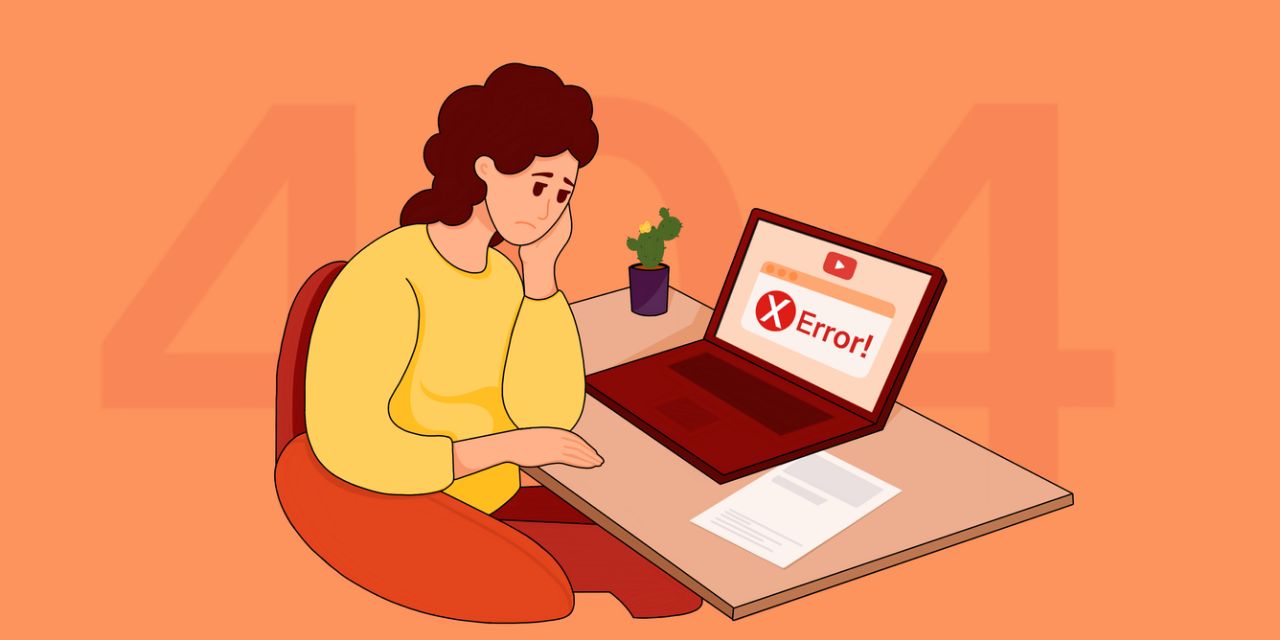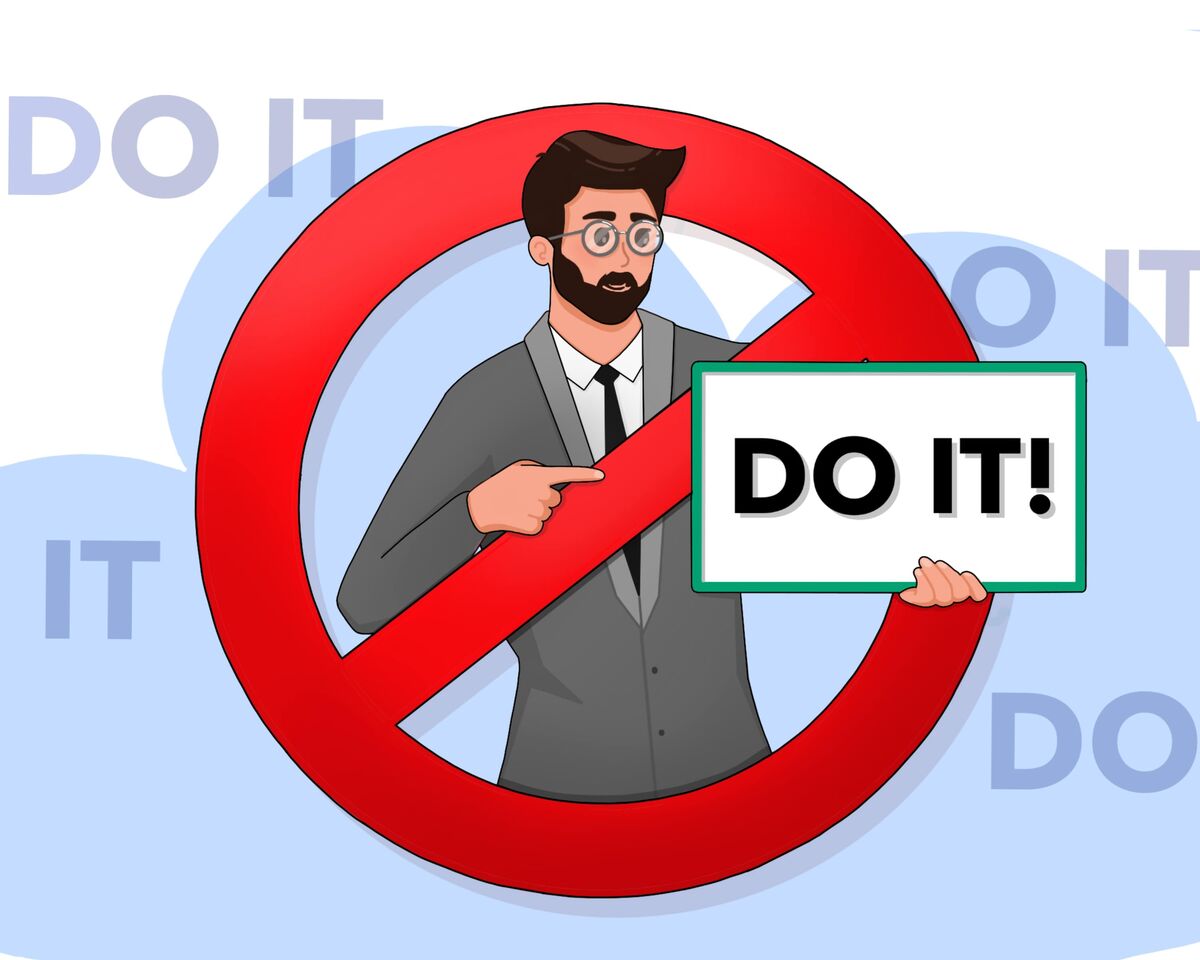YouTube No-Nos. Mistakes Every Creator Should Avoid!

Content creators often refer to a "dead" channel as one that has plateaued in all metrics, essentially becoming stagnant.
However, there are situations where trying to revive a channel is simply pointless. These situations are not related to a drop in views or a decrease in activity on the channel—those issues can still be managed if you are willing to put in the effort.
The main reason channels start to decline is a decrease in audience interest in your content. Beyond that, there are specific parameters that highlight this issue. Let's examine the signals that indicate a channel is in decline:
- Decline in views
If views are dropping overall, the first thing you should do is check your analytics, specifically the "Audience" tab, to see whose views are decreasing: new viewers or returning viewers.
The issue is that if your new videos are not interesting to your target audience, who repeatedly return to your channel to watch new content, YouTube's algorithms will automatically reduce the exposure of your content to new viewers.
These metrics are closely linked, so working on their recovery will require a comprehensive approach.
- Reduced viewing time, drop in retention and engagement
Here we will focus exclusively on numbers and percentages:
- People are spending less time watching your videos overall: for instance, if each video used to accumulate 500 hours of watch time per week, but now it's down to 300, 200, and continues to decrease.
- The average watch time and retention rate have also dropped: if viewers used to watch an average of 6 minutes of a 10-minute video, which was more than 50% of the video, but now they only watch 5 or 4 minutes, the percentage also falls. This is also a bad sign.
If you're unsure which of these two metrics is more important to consider when analyzing your channel—watch time in minutes or retention in percentage—let's refer to YouTube's help resources for the answer.
YouTube indicates that these two metrics are considered differently depending on the length of the video: for short videos, you should primarily look at retention in percentage, while for long videos, you should focus on watch time in minutes.
However, what YouTube considers a short or long video remains unclear.
- The growth rate of the number of subscribers has decreased or stopped completely
In reality, if you are still gaining some subscribers over a reasonable period of time, the channel can still be saved.
However, if the growth rate has dropped, it could be a sign that something is wrong. For instance, if you used to get ten new subscribers per day but now only get two, you need to reflect on what might have gone wrong.
- Decrease in the number of reactions from the audience
As of today, the primary driving force for promoting any video on YouTube is getting into the recommendations.
Interestingly, YouTube states that watch time or retention don't significantly influence how often your video will be recommended to viewers. Instead, this is determined by performance signals and the video's topic.
Performance signals are exclusively about how actively people interact with your content.
Remember, YouTube doesn't promote creators' videos; it curates recommendations for viewers. Thus, the first and most important factor affecting your video's promotion is the audience's interests.
You can track these interests by studying trends, competitor videos, and the "Audience" tab, specifically looking at "what and who else your viewers are watching." However, analytics won't tell you with certainty if you'll hit the right topic 100%.
We also have performance signals, which are easier to monitor. But there's a catch. In its article on how the recommendation systems work, YouTube mentions that there are over eighty billion signals, making it impossible to list them all.
Most likely, even YouTube representatives don't know exactly how many of these signals there are or what happens with them because this task is fully delegated to artificial intelligence, which manages the recommendations.
The figure of eighty billion refers not to specific audience data but to various combinations and aggregations of this data, often in comparison with other metrics. Let's clarify with an example.
YouTube analyzes how viewers reacted to a video: liking, sharing, commenting. It then compares this data with another video on the same topic by a different creator to see which video is more effective. If this data is insufficient, additional analytics parameters may be brought in.
Which viewer reactions are precisely tracked remains unclear. YouTube highlighted only a few in its article: clicks on the video (CTR), watch time and retention, survey responses after viewing, likes, dislikes, and shares.
Additional performance signals include the number of moments in the video that viewers rewatch, comments, completions, and retention at the beginning of the video. An unusual performance signal analyzed by YouTube is the decrease in the number of remixes of your videos, though this metric is likely less frequently referenced than the others.
An important caveat: it's not always just about audience interest. Another factor influencing channel growth is adherence to YouTube's policies. The channel can be affected by obvious strikes but also by any activity that may seem suspicious or ambiguous to YouTube’s algo.
This could be:
- Strikes, meaning warnings. They come with video removal, thus eliminating a source of views.
- An 18+ rating restricts your audience reach. With this rating, videos won't be shown to anyone under eighteen, unregistered users, or those who haven't specified their age in their account.
- Contentious situations involve borderline, gray, and even the mysterious "shadow ban."
What are the top mistakes creators make that harms their channel?
1. Lack of consistency on the channel: Are you posting content too infrequently, sacrificing regularity?
2. Mixing multiple topics on the channel: Have you diversified your content too much, confusing your audience's expectations?
3. Mixing multiple languages: Are you releasing videos in multiple languages, potentially alienating segments of your audience?
4. Shorts and long videos on the same channel: While not universally detrimental, Shorts may impact promotion negatively for many creators when mixed with longer content.
5. Outdated topics: Has your content become outdated or irrelevant to your audience's current interests? For instance, Pokémon Go was popular in 2016, and Among Us dominated YouTube in 2020, but interest may have waned since then.
6. Competitive content: Are you keeping up with trends in your niche? Failing to stay updated with what's trending can cause your content to fall behind in terms of quality or relevance compared to competitors.
Let's now discuss less obvious aspects, such as inefficient traffic.
This topic might not be widely popular, but it's always relevant for those who receive views from external traffic sources or, for instance, want to encourage viewers from one channel to subscribe to another.
Let's start with external traffic.
Regardless of where you drive traffic to your YouTube channel, whether it's from TikTok or your own website, remember one thing:
1. Regardless of how many views come from external sources, they do not influence the promotion of the video.
This means that while you may gain more subscribers or views, it won't advance the video within YouTube because these views don't help the algorithm gather information about your audience and their interests.
Now, onto the second issue: driving traffic from one channel to another.
If you decide to open a second channel on a completely different topic, only a tiny percentage of subscribers from your main channel who transition to the new one will actually watch videos on the new topic.
And that's okay because some subscribers followed you specifically for the main topic you cover and are only interested in that.
Your loyal viewers will likely subscribe to the new channel to support their favorite creator, but they may not watch videos on your new channel or watch and hinder further promotion by not being your target audience.
By the way, a similar situation can occur with channels that gain subscribers through contests and prize giveaways. You may attract viewers who subscribe to you only for the giveaways, increasing your subscriber count, but these viewers won't contribute to views on your content.
YouTube's rules prohibit contests where you ask people to subscribe, like, or artificially inflate metrics on videos. So keep this in mind for any giveaways you may run.
The next issue concerns re-uploading videos.
In general, deleting an old video and re-uploading it to YouTube is considered as re-uploading.
If you believe you can present the material in a better light then go ahead and re-upload. Many may boast that after re-uploading, the video took off. However, there's something interesting to note.
Re-uploading a video, even if you've deleted the original from the platform, is still considered a re-upload for YouTube. Remember the saying "The internet never forgets"? Well, it's as true as ever here.
If you've uploaded a video once, YouTube's backstage will still retain information that the video was uploaded. When a video is created, YouTube generates its textual content, leaving a digital footprint. The servers and hosting systems already have a digital fingerprint of that video. In these cases, the re-upload matches the fingerprints. Hence, it's considered a re-upload
If you continually re-upload videos, YouTube might start considering your channel as fraudulent and spammy, trying to deceive its systems. While you won't be officially banned, you might be pushed into obscurity. You'll be like a gray channel for YouTube, engaging in some shady fraudulent tactics.
And most importantly, not every viral video is beneficial for your channel.
Let's be honest, everyone dreams of their content going viral. But not everyone considers the flip side of the coin.
First, along with views, a viral video can also bring a flood of negativity in the form of haters waiting to spew venom at someone they haven't targeted yet. And that's not the only problem.
Viral videos can attract an audience that doesn't fit your channel.
And there are two situations in which this happens:
- You've made a video that's not on the main topic of your channel, or the video only slightly relates to your current content.
- The video stands out in terms of quality or style from the general format of videos on your channel.
Regardless of the reasons, the outcome remains consistent: your channel may suffer a severe decline. Some YouTubers, after experiencing a surge in popularity, have even decided to delete viral videos to prevent their channel from "dying" completely. This is similar to a chess game, where sometimes you must sacrifice the queen to save the king.
The thing is, people who were hooked by one of your videos, subscribed to the channel in a moment of excitement, but don’t see similar content in your catalog. These new subscribers will quickly stop watching all your new videos. And for YouTube, this means one thing: if subscribers and regular viewers aren't watching your new videos, there's no point in giving them more exposure and promoting the video.
Then there's another, equally sad situation. Let's say your videos usually gain thousands of views, but then one video, which isn't strongly related to the channel's topic, suddenly gets a hundred thousand views.
At the same time, YouTube conducts test runs with each new video release, gathering information about the audience category that's suitable for watching your videos.
So, it collects data about the audience that watched the viral video and decides to show your new video to the same people next time. And those same people aren't interested.
For a while, YouTube will keep trying to push your content to that audience, but it will eventually realize that nobody there is interested in your content and will give up on further attempts. That's when views, watch time, and channel growth rates drop almost to zero.
In situations like the aforementioned, even prominent creators are forced to delete videos to erase information about an audience that simply doesn't fit their channel's theme.
Yes, it's painful and sad, losing significant views is always disappointing. But think primarily about what's more valuable to you—view counts and subscribers or the target audience.
So, you may have a reasonable question after reading all the above: “what should I do with all this information?!”
First of all, don’t be nervous, because there are solutions:
- Experiment on your channel: changes in format, presentation, even just upgrading equipment quality
- Work with trends and evergreen topics
- Make channel and video layout changes
- Try structural video adjustments
There are indeed many aspects that, if not taken into account, can lead your channel to an undesirable future and even a sad end. However, if you can identify the weaknesses of your channel and address the issue, you can make positive improvements and turn the tide. So stay vigilant and keep creating.




